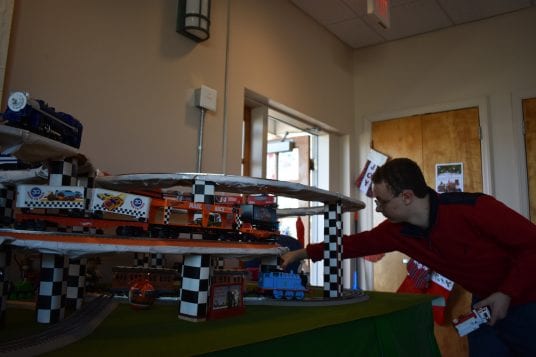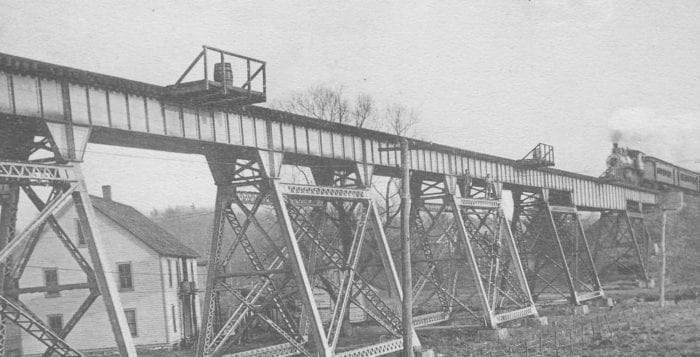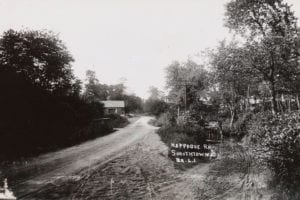As the Dickens Festival filled in the chilly outdoor air with 19th-century charm, the harbormaster building itself piped into the village a different kind of old-time allure, that of locomotives and steam engines. More than 20 miniature trains ran in inexhaustible loops, little jets of steam puffing from their chimneys. Boy Scouts of Troop 354 hovered over the tracks, along with Charles, Marie and William Reed of Port Jefferson Station.
Charles, the father, owns the trains and knows how to put all the complicated parts and tracks together. William, who makes the words “train enthusiast” seem an understatement, knew each of the models and could do “train talk” with something of a dizzying speed. Ask the youngest Reed, who’s an Eagle Scout with Troop 354, about trains and he’ll tell you about trains in far-off places.
“Korean railways is the national railway they have there, some of their high-speed trains are French derived, based on the French models like the KCX1 and 2,” he said.
The young man dashed around and between the tables, adding liquid to the trains’ stacks and helping his father fix the tracks.
The Reed family has been chugging along for the last several weeks setting up the train display, although in earnest the family spent several months beforehand gathering all the materials it needs to have on hand. Setting up the public display has meant several long nights, carting box after box of train collections, laying it out and making sure each is in operating order. The family asks for donations at the door, where on average around $1,400 is raised for Toys for Tots.
“We don’t need them in the boxes, that’s why we can take them out and share them,” Marie, the mother, said.
In previous years, another man used to set up trains during the Dickens Festival. After he moved away, the Reed family stepped in. Marie said that, while he would have a score of volunteers, the Reed family only has themselves and a few people from the Scout troop.
Charles said that each year since they started, six years ago, they have added more tables. At first, they had six tables with 10 trains. Today they set up 10 tables with 20 trains.
“It’s crazy, but it comes together eventually,” the father said.
The amount of effort the family puts into it was recently acknowledged by Mayor Margot Garant at a Port Jefferson village meeting in November.












